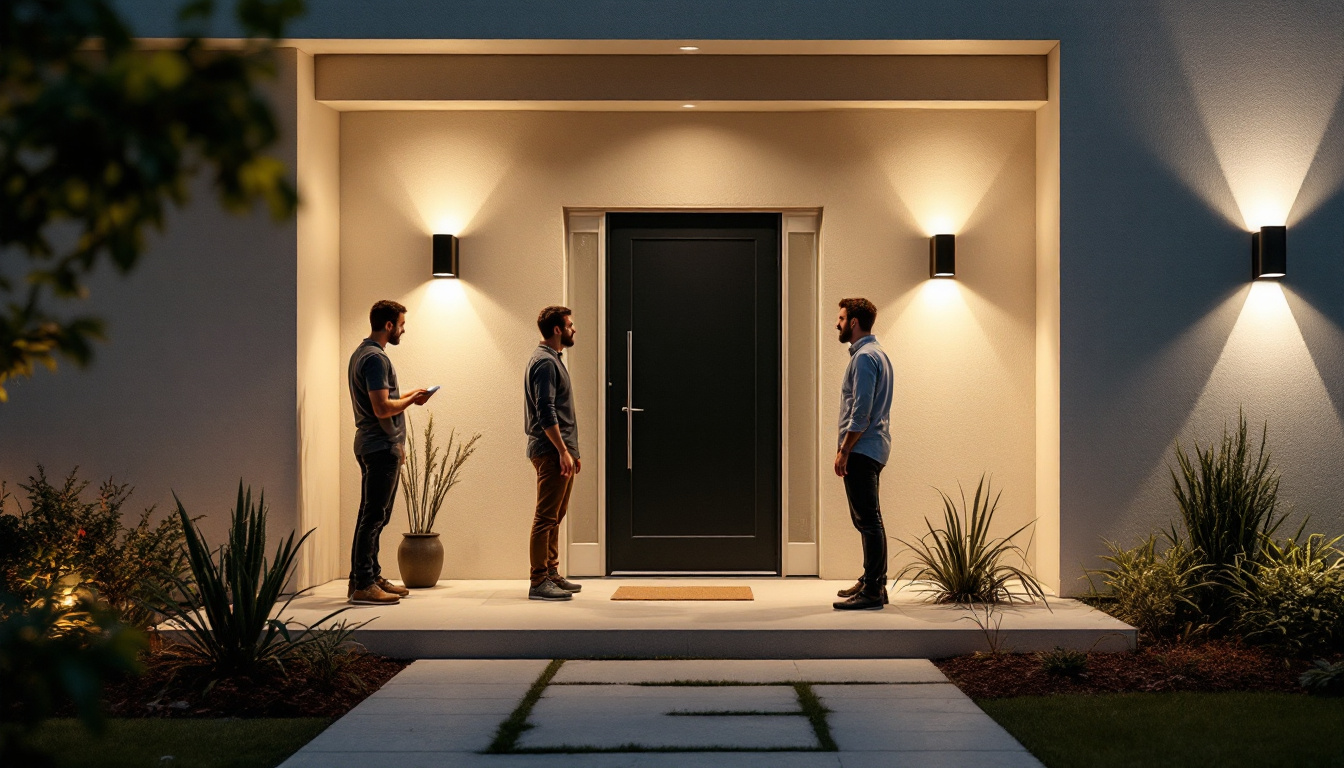
Lighting contractors are constantly seeking ways to enhance their services and improve their bottom line. One often overlooked method is the process of bypassing a ballast in lighting systems. This technique not only streamlines operations but also offers significant benefits to both contractors and their clients. Understanding the ins and outs of ballast bypassing can give lighting contractors a competitive edge in a rapidly evolving industry.
Ballasts are essential components in many traditional lighting systems, particularly those using fluorescent or HID (High-Intensity Discharge) lamps. Their primary function is to regulate the current to the lamp, ensuring it operates efficiently and safely. However, as technology advances, the reliance on ballasts is diminishing, particularly with the rise of LED lighting.
In conventional systems, ballasts can often be a source of inefficiency. They can consume energy even when the lamp is off, leading to unnecessary costs for both contractors and clients. Additionally, ballasts can fail over time, leading to increased maintenance and replacement costs. Understanding these challenges is crucial for lighting contractors looking to optimize their services.
The transition to LED technology has revolutionized the lighting industry. LED systems do not require ballasts, which simplifies installation and maintenance. By bypassing the ballast, contractors can provide clients with a more efficient lighting solution that reduces energy consumption and enhances overall performance.
Moreover, LED lights have a longer lifespan compared to traditional lighting options. This longevity translates to fewer replacements and reduced maintenance costs, making it an attractive option for clients. As a result, lighting contractors who embrace this shift can position themselves as forward-thinking professionals who prioritize efficiency and sustainability. The environmental benefits of LEDs cannot be overlooked either; they produce less heat and contain no hazardous materials, making them a safer choice for both users and the planet.
Bypassing a ballast offers several advantages for lighting contractors. Firstly, it streamlines the installation process. Without the need to integrate a ballast, the wiring becomes simpler, allowing for quicker installations. This efficiency can lead to increased job turnover and the ability to take on more projects.
Secondly, bypassing a ballast can enhance the reliability of the lighting system. Fewer components mean fewer points of failure. This reliability can be a strong selling point for contractors, as clients are often looking for solutions that minimize maintenance and operational disruptions. Additionally, the reduction in components can lead to a more compact design, allowing for innovative lighting solutions that can fit into tighter spaces or unique architectural designs. The versatility of LED systems, combined with the elimination of ballasts, opens up new possibilities for creative lighting applications, from residential to commercial settings.
For lighting contractors interested in implementing ballast bypassing, understanding the steps involved is crucial. The process may vary depending on the specific lighting system, but the following general steps can guide contractors through the process.
Before making any changes, it is essential to assess the existing lighting system. Determine the type of lamps and ballasts currently in use. This assessment will help identify whether a ballast bypass is feasible and what specific components will need to be replaced.
Contractors should also consider the overall condition of the wiring and fixtures. In some cases, older systems may require additional upgrades to ensure compatibility with new LED technology. A thorough assessment lays the groundwork for a successful bypass. Additionally, it is wise to evaluate the energy consumption of the current lighting setup. This analysis can highlight potential savings and provide valuable insights when discussing the benefits of the upgrade with clients.
Once the assessment is complete, contractors should gather the necessary tools and materials for the bypass. This typically includes LED lamps designed for ballast bypass, wire connectors, and basic electrical tools such as wire strippers and screwdrivers.
Ensuring that all materials meet safety standards is crucial. Using high-quality components will not only enhance the reliability of the installation but also build trust with clients who expect professional-grade work. Furthermore, it can be beneficial to have a multimeter on hand to verify voltage levels and ensure that the wiring is correctly configured before proceeding with the installation. This extra step can prevent future complications and ensure a smooth transition to the new lighting system.
With the tools and materials ready, contractors can proceed with the ballast bypass. The process generally involves removing the existing ballast and rewiring the fixture to connect the LED lamps directly to the power source. It is essential to follow safety protocols, including turning off the power supply before beginning any work.
Once the bypass is complete, contractors should test the system to ensure that the new LED lamps are functioning correctly. This testing phase is critical for identifying any potential issues before handing the project over to the client. Additionally, it’s advisable to provide clients with a brief overview of how to maintain their new lighting system, including tips on bulb replacement and troubleshooting common issues. This not only empowers the client but also reinforces the contractor’s commitment to quality service and customer satisfaction.
Once contractors have successfully implemented ballast bypassing in their projects, the next step is to market these benefits effectively. Clients are increasingly looking for energy-efficient solutions, and highlighting the advantages of bypassing a ballast can set contractors apart in a competitive landscape.
One of the most compelling selling points of ballast bypassing is the potential for energy savings. By switching to LED technology and eliminating the ballast, clients can significantly reduce their energy consumption. Contractors should provide potential clients with detailed information on expected savings, including calculations based on local energy rates.
Case studies showcasing previous projects can also be effective. Demonstrating real-world examples of energy savings and improved performance can help convince clients of the benefits of making the switch.
Reliability is a key concern for many clients, especially in commercial and industrial settings. By emphasizing the reduced maintenance associated with ballast bypassing, contractors can appeal to clients who prioritize long-term operational efficiency.
Providing warranties on the new LED systems can further enhance client confidence. Knowing that the new lighting solution is backed by a warranty can alleviate concerns about potential failures and maintenance costs.
As the industry evolves, continuous education and training are vital for lighting contractors. Understanding the latest technologies and installation techniques can empower contractors to offer the best solutions to their clients.
Regularly attending industry conferences, workshops, and training sessions can help contractors stay informed about the latest trends in lighting technology. Networking with other professionals in the field can also provide valuable insights and best practices.
Many manufacturers offer training programs specifically focused on their products. Engaging in these programs can deepen a contractor’s understanding of ballast bypassing and LED technology, enabling them to provide expert advice to clients.
Participating in certification programs can enhance a contractor’s credibility. Certifications related to energy efficiency and lighting design can demonstrate a commitment to quality and professionalism. Clients are often more inclined to work with contractors who have recognized credentials, as it instills confidence in their expertise.
In the competitive landscape of lighting contracting, building strong relationships with clients is essential. Bypassing a ballast can be a part of a broader strategy to enhance client satisfaction and loyalty.
Exceptional customer service goes beyond the installation process. Contractors should maintain open lines of communication with clients throughout the project. Regular updates and transparency about the work being done can foster trust and satisfaction.
After the installation, follow-up communication is equally important. Checking in with clients to ensure they are satisfied with the new lighting system and addressing any concerns can solidify a positive relationship. Happy clients are more likely to refer contractors to others and return for future projects.
To further enhance client relationships, contractors can consider offering maintenance plans for the new lighting systems. Regular maintenance can ensure optimal performance and longevity of the installed systems, providing peace of mind for clients.
These plans can be tailored to meet the specific needs of different clients, whether they are residential, commercial, or industrial. By providing ongoing support, contractors can position themselves as trusted partners in their clients’ lighting needs.
Bypassing a ballast presents a unique opportunity for lighting contractors to enhance their services and boost their business. As the industry continues to evolve, embracing new technologies and methods can set contractors apart from the competition.
From understanding the benefits of ballast bypassing to effectively marketing these advantages, contractors can position themselves as leaders in the field. By investing in education, building strong client relationships, and providing exceptional service, lighting contractors can not only improve their bottom line but also contribute to a more sustainable future in the lighting industry.
In a world increasingly focused on energy efficiency and sustainability, the ability to bypass a ballast and offer cutting-edge lighting solutions can be a game-changer for lighting contractors. Embracing this technique is not just about improving business; it is about leading the charge toward a brighter, more efficient future.
Ready to elevate your lighting projects and outshine the competition? LumenWholesale is here to support your journey towards more efficient and sustainable lighting solutions. With our extensive selection of spec-grade lighting products at unbeatable wholesale prices, you can confidently bypass the ballast and deliver superior value to your clients. Say goodbye to inflated markups and hello to hassle-free bulk buying with free shipping. Don’t compromise on quality or cost. Click now to explore our products and secure the best value in wholesale lighting for your next project at Wholesale Lighting at the Best Value.

Discover the science of light wrappers and their transformative impact on modern lighting solutions.

Discover how bollard lights can transform outdoor spaces while boosting profitability in lighting installations.

Discover effective strategies for training your team in selecting and installing outside door lights.

Discover essential tips and expert insights for lighting contractors to master the use of LED can light bulbs.